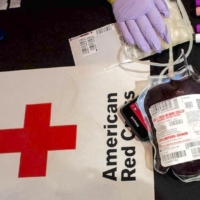Most Male Suicides in U.S. Show No Known Prior Mental Health Link, Study Reveals Use of firearms and alcohol consumption are common factors in these deaths, UCLA and CDC researchers find
A majority of American men who die by suicide don’t have any known history of mental health problems, according to new research by UCLA professor Mark Kaplan and colleagues.
“What’s striking about our study is the conspicuous absence of standard psychiatric markers of suicidality among a large number of males of all ages who die by suicide,” said Kaplan, a professor of social welfare at the UCLA Luskin School of Public Affairs.
For the study, published online in the American Journal of Preventive Medicine, Kaplan and his co-authors from the Centers for Disease Control and Prevention tracked recent suicide deaths among U.S. males age 10 and older. They found that 60% of victims had no documented mental health conditions.
Further, males without a history of mental health issues died more frequently by firearms than those with known mental health issues, and many were found to have alcohol in their systems, the researchers noted.
The report highlights the major public health challenge of addressing suicide among males, who are far more likely to die by suicide and less likely to have known mental health conditions than females. In 2019, for instance, males accounted for 80% of all suicide deaths in the U.S., the authors said, and suicide is the eighth-leading cause of death among males 10 and older.
Kaplan and his colleagues examined data from the Centers for Disease Control and Prevention’s National Violent Death Reporting System for the most recent three-year period available, 2016 to 2018, during which more than 70,000 American males died by suicide. More than 42,000 of them had no known mental health conditions, they found.
The researchers then compared characteristics of those with and without known mental health conditions across their life span in four age groups: adolescents (10–17 years old), young adults (18–34), middle aged adults (35–64) and older adults (65 and older). Identifying the various factors that contribute to suicides among these groups is crucial to developing targeted suicide prevention efforts, especially outside of mental health systems, the team emphasized.
Among their findings, they discovered that across all groups, those without known mental health conditions were less likely to have had a history of contemplating or attempting suicide, or both, than those with such issues. In particular, young and middle-aged adults without known mental health conditions disclosed suicidal intent significantly less often, they said.
In addition, males with no mental health history who died by suicide in three of the four age groups — adolescents, young adults and middle-aged men — more commonly experienced relationship problems, arguments or another type of personal crisis as precipitating circumstances than for those with prior histories.
The researchers emphasized the importance of focusing on these kinds of acute situational stressors as part of suicide prevention efforts and working to discourage the use of alcohol, drugs and guns during times of crisis — particularly for teens and young adults, who may be more prone to act impulsively.
Kaplan and his colleagues said the findings highlight the potential benefits of strategies to create protective environments, provide support during stressful transitions, and enhance coping and problem-solving skills across the life span.
“Suicide prevention initiatives for males might benefit from comprehensive approaches focusing on age-specific stressors reported in this study, in addition to standard psychiatric markers,” the researchers wrote.
“These findings,” Kaplan said, “could begin to change views on the non–mental health factors driving up the rate of suicide among men.”










The title of this article does not line up with the research article it describes to the point that it is misleading. Please consider changing it to reflect the difference between known mental health condition (diagnosed) versus actual mental health condition (both diagnosed not diagnosed). The authors even point out that their study could point to “a possible under-recognized silent crisis in men’s mental health.
The title could have just have easily said that most men who complete suicide have not received mental health care. In some ways that may be more accurate.
Thanks for bringing this to our attention. The headline has been updated to better reflect the study results.